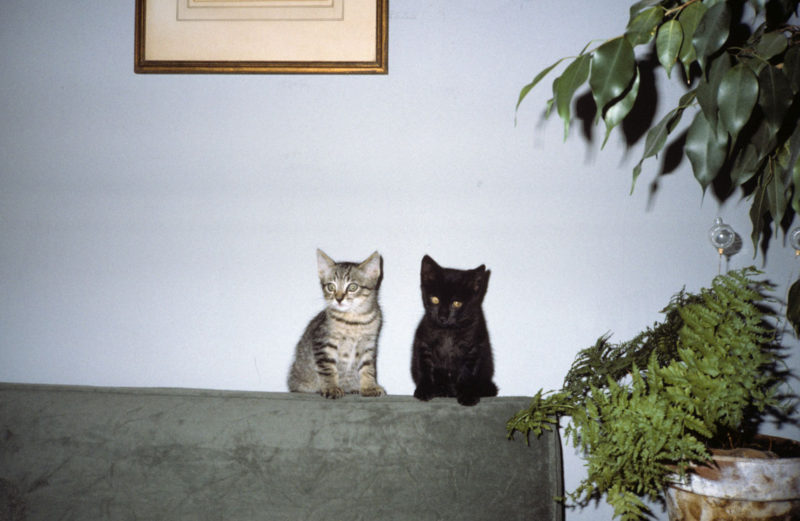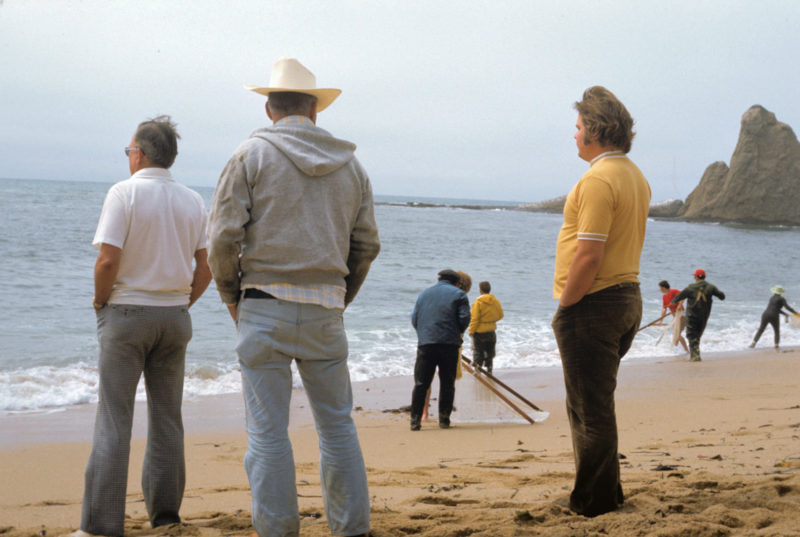Marlene Dietrich, Leni Riefenstahl, and Diane Arbus are subjects of two books I recently read back to back. The two German artists are subjects of a joint biography by Karin Wieland, entitled Dietrich & Riefenstahl: Hollywood, Berlin, and a Century in Two Lives (I read the book in its original German version, so I cannot comment on the English translation). Arbus’ life was newly dissected by Arthur Lubow in Diane Arbus: Portrait of a Photographer. Reading these books one after the other was coincidental. But it was a furtuitous coincidence, given it had me dive deeply into the lives of three very important female artists of the 20th Century.
The books do their subjects justice, in the sense that a biography can do that. Biographies offer a person’s history, and history is not just a collection of facts. It’s also a collection of interpretations, opinions, and projections. It is for that reason that biographies are inevitably flawed in some ways. Some interpretation, opinion, or projection might be going into the wrong direction. This is something we, the readers, want to keep in mind. But this is also something that applies to the one life we have full access to, our own. Even in this case, it’s anything but clear what a history might look like. We constantly tell ourselves (or others) things about our own biographies that are questionable, that are a bit too good to be true, or that are outright false. This is part of our human nature.
I will admit that I would not have read separate biographies of Leni Reifenstahl or Marlene Dietrich. To begin with, my interest in movies is minimal. I also know enough about Leni Riefenstahl’s life to be aware of the fact that she provided the Nazi regime’s visual underpinnings, making her not just a talented female artist who happened to work in the wrong time, at the wrong place, but rather an equivalent of Albert Speer. Both Speer and Riefenstahl got off very lightly after World War 2, even though they both would have deserved to go to the gallows alongside the likes of Julius Streicher.
Somewhat more surprisingly, after World War 2 both Speer and Riefenstahl bamboozled an international audience into believing their lies about their past, creating quite the success stories. Riefenstahl was warmly received in the United States when she brought her fascist visual sensibilities to tribes in Africa. It is much to her credit that Susan Sontag publicly eviscerated Riefenstahl’s mid-1970s efforts in an article entitled Fascinating Fascism. If you have never read it, you should now.
Reading a discussion of Riefenstahl’s life in parallel to Dietrich’s intrigued me, though. After all, they both were two very talented and forceful women, who both made their careers at exactly the same time, under exactly the same circumstances, having grown up under the Kaiser and then trying to make it in the ill-fated, yet culturally incredibly fruitful conditions provided by the Weimar Republic. They didn’t just know of each other, they also knew each other, and they might even have lived in the same house for a while, albeit in different apartments.
Crucially, in their own ways, Dietrich and Riefenstahl worked against it each, with the actress leaving Germany and eventually becoming a US citizen, to return home to her then defeated former homeland in her new country’s uniform — while the dancer turned actress turned film maker was hiding out somewhere in the German south, hoping to finish her last movie, for which she had furiously lobbied Nazi officials even while the country was imploding rapidly.
It’s all about the choices you make, that much is clear. And while Arbus’ life has little, if anything, to do with either Riefenstahl’s or Dietrich’s, this also applies here. It’s circumstances and choices, and you either grasp opportunities, or you don’t. But opportunities aren’t just opportunities, they will also require judgment (refusing to judge in itself is a form of judgment).
Maybe it is because I read Dietrich & Riefenstahl first before moving on to Diane Arbus that the themes of opportunities, judgments, and choices stuck so firmly in my head. For sure, the Weimar Republic would appear to invite this way of looking at things, given the outcome is widely known, as is the outcome of what came after it, first the destruction of a civil society, and then its happy descent into utter barbarism, resulting in large-scale mass murder and war.
So there is a larger scale rupture in the lives of Dietrich and Riefenstahl that is absent from Arbus’. Of course, we have no advance way of knowing what larger ruptures we might be presented with (even though the fact that an utterly unqualified, openly racist real-estate developer is one of the two presidential candidates right now might give us an inkling).
In a very obvious way, Diane Arbus suffers from the fact that the artist’s estate wouldn’t allow the reproduction of any photographs. This is an absurd situation for any biographer to find themselves in. Should an estate be allowed this level of, let’s face it, censorship? I don’t think so. The reader certainly would have gained much from being able to see especially the lesser known photographs (I’m writing this as someone who knows quite a few of the pictures, so I cannot imagine how someone might feel who maybe only knows a a handful). Lubow works around the restriction well, though; and the absence of photographs ultimately speaks volumes about the estate in ways that words couldn’t.
While larger ruptures are absent from the Arbus biography, it is closer to its subject, making it clearer why — possibly – she could have made some of the decisions she did make. The three women each had their fair share of personal ruptures, all of which are laid out in detail — to the point of parts of both books becoming a bit too much like slightly better written sections of People magazine. That possibly is something we need to endure as spectators — much like there often is nothing we can do to prevent parts of our own lives becoming a bit more lurid or seedy than we would hope.
Then again, maybe this obsession with gossip is a sign of our celebrity obsessed times, where we obsess over what someone had for breakfast while ignoring the bigger, more important things. To give an example from one of the books, once Marlene Dietrich has made it as a respected artist, large parts of her biography do read indeed like a well written People piece. There are only so many letters written to or from the various lovers you want to read before you realize what little is to be gained from doing that.
Lives being led are lives that might have their brush with, for a lack of a better word, the gutter, with what we’d rather not deal with. It is easy to cast judgment on others based on that, and it would be easy to do it in each individual case here. I personally couldn’t do that for a variety of reasons. To assume that those who excel in their arts are saints as persons, that they not only aspire but also conform to ideals we connect with a saint — that’s just absurd. For sure, there are things I would rather not have known about either Marlene Dietrich or Diane Arbus (I will emit Leni Riefenstahl here, because there simply are no redeeming qualities in her life).
Gossipy aspects aside, what this points to is the fact that neither of these three women makes it easy to write a gushing, obsequious biography where in pages and pages a genius is laid bare, with possibly some minor flaws that reflect this time’s ideologies more than anything else (think any of the biographies written around the so-called Founding Fathers). In their respective ways, these three artists made it to the top of their professions as the complex characters they were, and the biographies make very little effort to paint a beautiful picture. Given they each had to work against very male dominated environments, and given they each did it successfully, there are a lot of lessons here.
Maybe a different way to phrase the immediately preceding would be to say that as a reader, you are being made to get to know someone who you might have wanted to know better, but who, at the same time, is someone who doesn’t make exactly that so easy.
I believe biographies only can provide us with true insight if we do a bit more work after we’re done with them. In each case, we need to reflect back and think about our own lives. The question how we would have behaved, given the same circumstances, is interesting but futile. Of course, I would want to think we all would have bravely resisted the Nazis, say, when in fact it’s likely most of us might not. Who knows?
It’s not so much Riefenstahl’s work for the Nazis that I hold against her (even though that’s reprehensible enough), it’s the fact that she then went on denying everything, pretending she had nothing to do with it — as if she had not shaped a large part of the success of the murderous regime she supposedly had nothing to do with. Riefenstahl’s lies are unmasked in the book, whether it’s her claim that Hitler hit on her and she resisted (various people actually saw the complete opposite happening), or any of the claims about her work under the Nazis. So it’s not so much about living up to very high standards, even though that’s something we might want to all aspire to. It’s also about owning one’s past, something these three women did in very different ways.
Eminently readable, both Dietrich & Riefenstahl: Hollywood, Berlin, and a Century in Two Lives and Diane Arbus: Portrait of a Photographer have much to offer for our times. They help us understand the specific respective environments Dietrich, Riefenstahl, and Arbus found themselves excelling in, and they speak of the human condition, of choices made and not made. Good art doesn’t arise out of a vacuum. As these two biographies make clear, it is produced by people who are as perfect and imperfect as we all are. High art can be made by good people, and it can be made by evil people.



